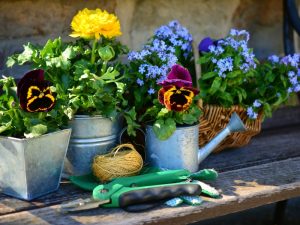Creating a beautiful and functional outdoor space doesn’t have to be complicated. Simple landscape design focuses on clean lines, minimal clutter, and thoughtful planning to maximise your garden or yard. This approach is not only aesthetically pleasing but also easier to maintain. This guide will explore the essential elements of simple landscape design and how to apply them to your outdoor area.
What are the benefits of simple landscape design?
Simple landscape design offers numerous advantages, making it an appealing choice for many homeowners. Here are some key benefits:
- Ease of maintenance: Fewer plants and simpler structures mean less time and effort spent on upkeep.
- Cost-effective: Minimalist designs typically require fewer materials and plants, reducing overall costs.
- Timeless appeal: Simple designs often have a classic look that remains attractive over time.
- Enhanced functionality: Clear layouts and defined spaces make using and enjoying your outdoor areas more accessible.
- Sustainability: Simplified landscapes can be more environmentally friendly, using fewer resources and promoting native plant species.
How do you plan a simple landscape design?
Planning is crucial to achieving an effective, simple landscape design. Here are some steps to guide you through the process:
- Assess your space: Take note of your yard’s size, shape, and existing features.
- Determine your needs: Consider how you want to use the space, whether for entertaining, relaxing, or gardening.
- Create a focal point: Choose one or two features, such as a tree, sculpture, or water feature, to draw the eye.
- Sketch a layout: Draft a basic plan that includes critical elements like pathways, plant beds, and seating areas.
- Choose a style: Decide on a cohesive design style, whether modern, rustic, or traditional.
- Set a budget: Determine how much you are willing to spend and allocate funds to different aspects of the project.
What are the key elements of simple landscape design?
Certain elements are fundamental to achieving a simple landscape design. These include:
- Clean lines: Use straight or gently curved lines to create a neat and orderly appearance for pathways and plant beds.
- Open spaces: Leave ample open areas to avoid a cluttered look and provide space for movement and relaxation.
- Limited selection of plants: Stick to a few types of plants to create a cohesive and uncluttered look.
- Balanced proportions: Ensure that elements like plants, hardscapes, and furniture are proportionate to the size of your yard.
- Functional areas: Designate specific areas for different activities, such as dining, playing, or gardening.
How can you choose the right plants?
Selecting the right plants is crucial for a successful, simple landscape design. Here are some tips to help you choose:
- Consider climate: Choose plants that thrive in your local climate to ensure they grow well and require less maintenance.
- Focus on perennials: Opt for perennial plants that return year after year, reducing the need for replanting.
- Use native species: Native plants are well-suited to the local environment and often need less water and care.
- Prioritise low-maintenance plants: Select plants that are easy to care for and don’t require frequent pruning or fertilising.
- Group plants by needs: To make maintenance easier, group plants with similar water, light, and soil requirements together.
How do you incorporate hardscaping into your landscape design?
Hardscaping elements add structure and functionality to your garden. Here’s how to integrate them into your simple landscape design:
- Pathways: Use gravel, pavers, or concrete to create clean, defined paths.
- Patios and decks: Provide areas for seating and entertaining with simple, durable materials.
- Borders and edging: Define plant beds and the other regions with clean, simple edging materials.
- Retaining walls: Use low walls to manage slopes and create terraced planting areas.
- Water features: Add a touch of tranquillity with a minor, simple water feature like a birdbath or fountain.
What role does colour play in landscape design?
Even in a modern landscape style, colour plays a significant role. Colour is a powerful tool in landscape design, influencing mood and visual appeal. Here’s how to use colour effectively:
- Choose a colour scheme: Select a limited palette of colours to create a cohesive look.
- Use neutral backgrounds: Stick to neutral tones for large areas like walls and paving to highlight your plants and features.
- Add pops of colour: Use colourful plants or accessories sparingly to create focal points and interest.
- Seasonal interest: Choose plants that offer different colours throughout the seasons for year-round appeal.
- Complement your home: Ensure your garden’s colours complement the exterior of your house for a harmonious look.
How do you maintain a simple landscape design?
Keeping your simple landscape design looking its best requires regular maintenance. Here are some tips:
- Regular weeding: Keep weeds under control to maintain a neat appearance.
- Pruning and trimming: Regularly prune plants to keep them healthy and in shape.
- Watering: Ensure plants receive adequate water, adjusting for seasonal changes.
- Mulching: Use mulch to retain soil moisture, suppress weeds, and improve the look of your garden.
- Cleaning hardscapes: Keep pathways, patios, and other hard surfaces clean and debris-free.
How can you incorporate sustainability in your landscape design?
Sustainable practices are essential for an eco-friendly garden. Here’s how to make your landscape design more sustainable:
- Use native plants: Native species are adapted to local conditions and often require less water and care.
- Implement water-saving techniques: Use drip irrigation, rain barrels, and drought-tolerant plants to conserve water.
- Compost: Create a compost heap to recycle garden waste and enrich soil.
- Reduce lawn areas: Minimise lawn space to save water and reduce the need for mowing.
- Use recycled materials: Incorporate recycled or repurposed materials for pathways, furniture, and other features.
Conclusion
Mastering the fundamental landscape design elements discussed in this article can transform your yard into a tranquil oasis. By focusing on clean lines, minimal plant varieties, and sustainable practices, you can make a beautiful, functional outdoor space that is easy to maintain. Remember to choose plants suited to your climate, incorporate hardscaping elements, and use colour strategically to enhance the overall design.
Create your dream outdoor space
At A1 Gardening & Landscaping Sydney Sydney, we specialise in expert landscape designs that suit your needs and budget. Our expert team is ready to help you transform your outdoor space into a stunning, low-maintenance oasis. Contact A1 Gardening & Landscaping Sydney Sydney today to get started on your garden makeover!



